Bench Press
The bench press is a common strength-training exercise that primarily works the chest, shoulders, and triceps muscles. This exercise is very effective for strengthening the chest, arm, and shoulder muscles. This will work several different muscles in your upper limb, including the chest, shoulders, and arms.
Depending on your goals, there are several kinds of bench presses that work somewhat different muscles. For example, performing a bench press with a tighter grip will place more attention on the triceps and forearms.
Other advantages of adding bench presses to your weight-training regimen include enhancing upper body strength, increasing muscular endurance, and even preparing your upper body to do motion-like pushups.
What is a Bench Press?
The bench press is a compound movement that targets the muscles of the upper limb. The exercise involves reclining on a bench and lifting weights using a barbell or a set of dumbbells. With your arms extended, you press upward while lowering the weight to your chest during a bench press. Bench presses come in a variety of configurations that target various muscle groups. These could affect how you’re lying flat, on an angle or descent, or by bringing your hands closer together on the barbell.
Muscles worked by a bench press
Bench presses can target the following muscles, though the specific variant you use may somewhat alter the muscles worked:
- Pectoralis major
- Anterior deltoid
- Triceps brachii
- Biceps brachii
- Serratus anterior
Advantages of a Bench Press :
- The pectoralis major of the chest, the anterior deltoids of the shoulder, and the triceps brachii of the upper arm are all worked out by the bench press, a complex exercise.
- Bench press targeted muscles, grips, and motion patterns.
- It creates strength as well as encourages the growth (hypertrophy) of these muscles. Muscle growth is not just desired by bodybuilders but also provides advantages for everyone as muscle mass typically declines with age. The bench press is a useful workout that makes it easier for you to carry out daily tasks that require pushing or carrying.
- This exercise can help to restore muscle mass for athletes who primarily utilize pulling muscles.
- This helps wrestlers, rock climbers, and swimmers. The deadlift and squat are the other two competitive lifts in the discipline of powerlifting; the third is the barbell bench press.
How do different bench press techniques affect the muscles?
Each bench press takes works for little different muscle groups. According to variations include:
- Traditional bench press. This practice is done lying down on a flat bench and pushing a barbell up and down at chest height. It operates the pectoral muscles, shoulders, and arms.
- Incline bench press. The bench should be tilted upward between 50 and 60 degrees for this interpretation so that you are somewhat bending back. It targets the muscles in the shoulders and upper chest.
- Decline bench press. For this variation, the bench should be angled downward, so when you fib down your feet are in a higher position than your head. It operates the lower chest muscles and shoulders.
- Narrow grip bench press. Your hands are nearer together on the barbell with this technique. It operates the triceps and forearms.
It is not necessary to perform all of these variations in the exact workout. Overexposing a muscle group can lead to damage. That is particularly true if you are operating with heavy weights.
If you like variety, you can pick two or more variations per exercise. Try to give yourself one or two rest days, permitting muscles to recover before trading between the other variations.
Here we describe different bench press techniques:
Traditional flat bench press
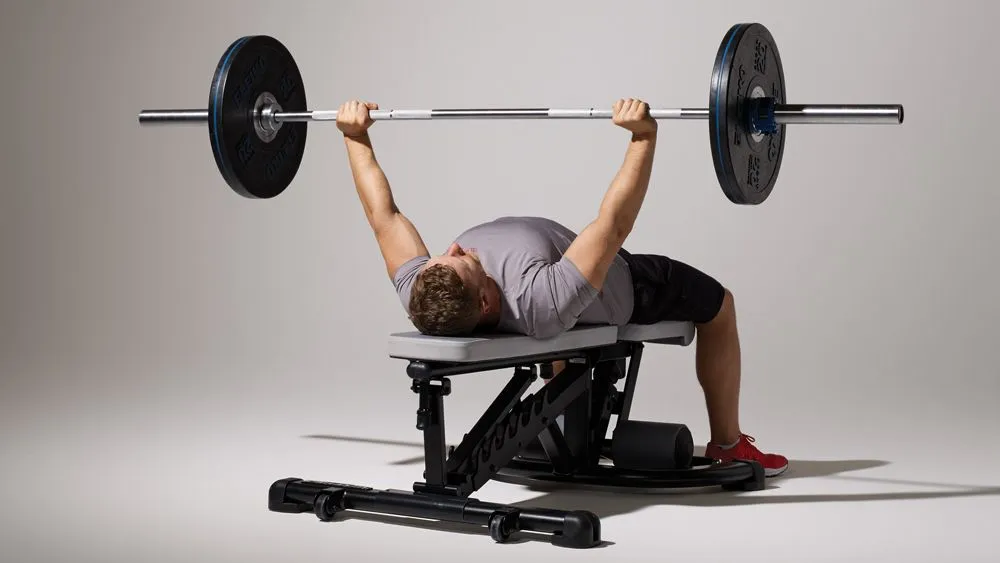
Equipment required:
Barbells (extra weights optional) or dumbbells are necessary, as is a flat bench.
- Lie on your back on a flat bench. Grab a barbell with hands slightly wider than shoulder width. The barbell should be directly over the shoulders.
- Push your feet firmly into the floor and keep your hips on the bench throughout the entire exercise.
- Keep your core employed and maintain a neutral spine place throughout the action. Evade arching your back.
- gradually raise the barbell or dumbbells off the rack, if using. Lower the barbell to the chest, about nipple level, letting elbows to flexed out to the side, about 40 degrees away from the body.
- Stop falling when your elbows are slightly below the bench. Press your feet into the ground as you push the barbell back up to return to the beginning position.
- Complete 8 to 10 reps, swinging on the weight used. Complete up to 2 to 3 sets.
Narrow grip bench press
Equipment required: barbell (additional weights optional), flat bench
- Use the procedures outlined above to perform a standard bench press, but keep your hands shoulder-width apart the entire time.
Incline bench press
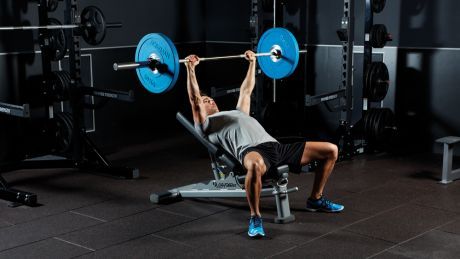
Equipment required: two dumbbells or barbells, incline bench angled between 50 and 60 degrees
- Place your feet level on the ground and lean back slightly so that your back rests on the bench in a neutral position.
- Begin by keeping dumbbells or a barbell directly over the shoulders. Face your palms along, with the thumb wrapped around the handle.
- Push the weight upward over your eyes or slightly higher, with elbows extended to 40 degrees.
- Breathe in and lower dumbbells or barbells gradually and with control until they touch or reach just above the chest, elbows, and wrists staying out to the sides.
- Repeat the press and complete around 5 reps or more. Keep in mind that reps rely on your goals and weight. Someone using heavier weights may do fewer repetitions than someone using lighter weights.
Decline chest press
Equipment required: bench bent down at 15 to 20 degrees and dumbbells or a barbell
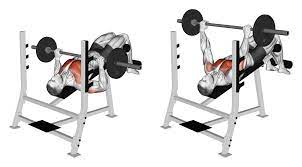
- Slowly lie down on the decline bench, your back should be firmly implanted on a bench and your leg should be above the head. Put your feet in provided stirrups.
- Keep a spotter to help you raise the barbell off the rack or hold dumbbells if using. Keep the weight directly over the shoulders, arms slightly wider than shoulder height.
- Press the weight up until your arms are angled at 50 degrees at the top.
- Gradually lower the weight back down to chest height, elbows out to the sides.
- Repeat the press and complete around 5 repetitions or more. Keep in mind that reps depend on your goals and weight. If using higher weights, one may perform fewer repetitions than if using lighter weights.
Partial Bench Press
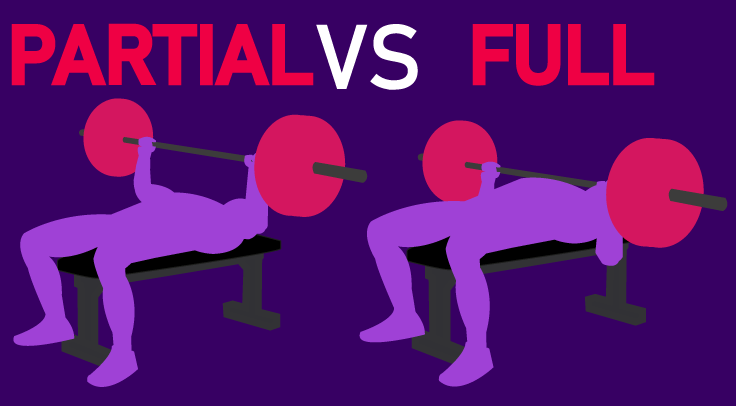
- If you have any troubles with shoulder joint stability, do not lower the weight so distant that the greatest part of the arms falls below parallel.
- While you may not get the advantage of the full range of movement, this modification puts less stress on the shoulder area.
Include bench presses into your routine:
- If you enjoy adding bench presses to your weightlifting routine, limit your usage to 2–3 times a week. Give yourself at least one day between doing bench presses to permit your muscles to recover.
- The number of repetitions you complete per session depends on your wellness goals. If you are operating very heavy weights, doing just 3 to 5 repetitions at a time may be sufficient to be useful. You can achieve up to 3 sets, relaxing for a few minutes between sets. The number of sets is also hanging on goals. A lifter examining to enhance strength may do 4 to 6 sets, while somebody who wants to work on athletic endurance may do 2 to 3 sets.
- For a full-body workout, expend another day focusing on the legs and shoulders by accomplishing squats, lunges, and overhead presses. Include cardiovascular exercises like cycling, swimming, and running in your weekly schedule as well.
- Pursuing this type of varied routine is important to make sure you are working your whole body. This type of weekly training also lets you take rest days to permit different muscles to recover.
- Full-body exercises can also be more useful than spot training, or always acting the same exercise to try to build up that muscle. Recall, your body fast adapts to exercise, so it is important to switch up your activities to keep your body challenged.
Common Mistakes
Avoid these common mistakes to keep your bench press secure and useful.
Moving Bar Over the Mouth or Neck
When racking or unracking the barbell, watch out that it does not pass too close to your lips and neck. This means that instead of lowering the weight over your face and neck, you should transfer the weight to and from the rack with your arms outstretched.
Improper Grip Width
Your hold on the barbell should normally be wide sufficiently to have your elbow joints at right angles (at a minimum) and forearms in a vertical plane. If your grip is too wide and your elbows too spread out, you risk damaging your pectoral muscles.
Incorrect Thumb Position
Another grip-based error affects the thumb position. Your hand grip should be overhand with the thumbs put under the barbell and across the top of the fingers. Do not put the thumbs behind the barbell or locked under the fingers.
Locking Elbows Suddenly
Contrary to some weightlifting security advice, you can “lock out” your elbows when accomplishing a bench press. The key to assembling this action safe is to not lock the elbow’s release unexpectedly or explosively.
Pushing Head Into Bench
For stability, keep your feet flat on the floor and your head flat on the bench. Avoid pressing your head into the bench, though, as this will weaken your neck muscles during the lift.
Arching Back and Lifting Buttocks
Your buttocks should stay flat on the bench during the press. Do not imitate the power-lifter type of arching your back so much that your buttocks raise off the bench. If you perform, this can result in low back pain.
Safety and Precautions
- If you have any trauma to your shoulder joint, you have to avoid this exercise.
- If you feel any shoulder pain during the bench press, substitute the weights and end the action immediately.
- Beginners can benefit by warming up, gaining an awareness of the bar, and learning proper form by performing presses without weight on the bar. Bench pressing a heavy weight should only be done with a spotter’s help if you are more experienced.
- It’s also a good idea to use a power rack when pressing large weights. The bars on either side of this kind of rack are positioned at chest height. In this manner, the bars stop the barbell from crushing your chest if your lift doesn’t work.
- Start by performing three sets of 10 repetitions with an unweighted barbell. Start adding weight until you can complete this exercise safely and with proper form. For a total weekly addition of 5 pounds, add 2.5 pounds to each side of the bar.
- Do not add more weight
FAQs
What muscles does bench press work?
Your pectorals, shoulder muscles, and arm muscles will mostly be worked when you perform a bench press. Pectoralis major muscle originates from the sternum (breastbone), ribs, and clavicle (collarbone) and is attached to the upper part of the arm bone (humerus).
Is bench press a good exercise?
The bench press is a wonderful back exercise because it engages almost all of the muscles in the upper body to some degree. You can feel the triceps, deltoid shoulder muscles, pectoral chest muscles, and latissimus dorsi back muscles working in this exercise.
What are the benefits of bench press?
Bench Press Advantages:
Upper-body strength has increased.
Upper-Body Strength Predictor.
Pec Major is larger.
More powerful Pec Minor.
Serratus Anterior shreds.
Delts made in iron.
Triceps Strength improved.
Bone health has improved.
Is it good to bench press Daily?
If the objective is to enhance technique, overcome a plateau, or temporarily prioritize the bench press above other exercises, then the answer is yes, you can bench press every day. If a lifter is prone to illnesses or cannot regularly train seven days a week, it is not advised to bench press every day.
Does bench press reduce chest fat?
The best course of action isn’t to practice continuous bench presses in the hopes of reducing chest fat. Bench presses can help you increase the size of your pec muscles, but chest-only exercises are unlikely to significantly increase metabolism.
Which is better pushups or bench press?
Both push-ups and bench presses work well for your chest. While push-ups require no extra effort or tools, bench presses involve operating with weights (barbell or dumbbell). The bench press is mostly stating the best training for chest expansion as it involves external load.
Why is the bench press difficult?
A variety of variables, including weak shoulder, triceps, and chest muscles, contribute to bench pressing difficulties. It may also be a consequence of poor or incorrect format and even result in muscular insufficiency.

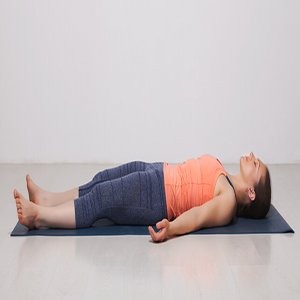

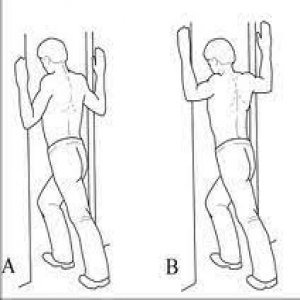
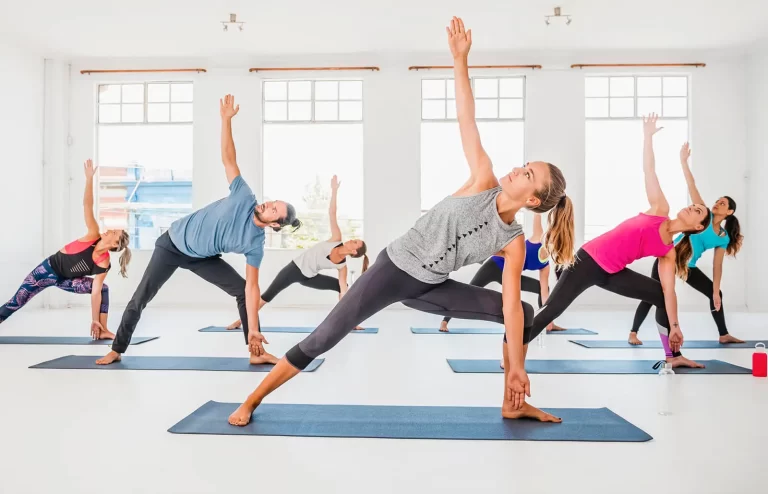

One Comment